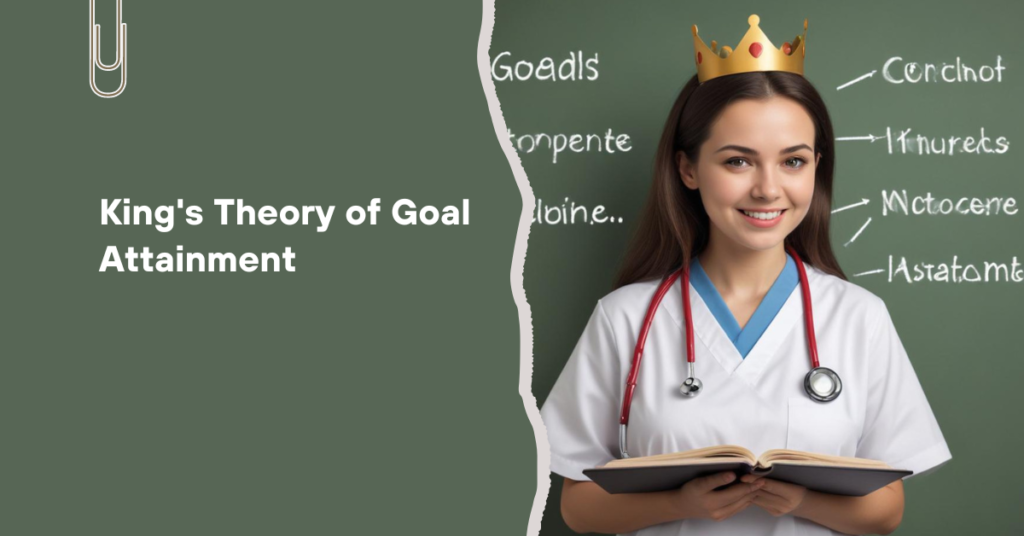The renowned Theory of Goal Attainment made Imogene Martina King, a revered nursing theorist who lived from the month of January 1923, to her death on December 24, 2007. Which she turned in around 1960 during her career as a freelance artist. Her work has been used in many places of service and she presents her work to thousands of nurses to be students internationally. King, as a world leader, deserves to be acknowledged for enhancing the scientific basis of nursing and leaving a lasting impression on the profession.
Not only did she actively lead the profession, but she was also a knowledgeable pioneer who created a constant source of knowledge, practice, and research with respect to professional nursing.
Beginning Life
Table of Contents
ToggleThe 30th of January 1923 saw the birth of Imogene King in West Point, Iowa. She decided to become a teacher during her first year of high school. However, her uncle, a surgeon in the community, gave her the opportunity to attend nursing school by covering the cost.
She thought that attending nursing school would enable her to leave the small town life behind, so she accepted his proposal at that point. That, then, was the start of an extraordinary career for her as a nurse.

The Field of Education
Even though becoming a nurse was not Imogene King’s first professional choice, she loved her time in nursing school and performed well in that role. She earned her nursing diploma in 1945 and was trained in Nursing School at St. John’s Hospital, St. Louis, Missouri.
After working as a staff nurse for a period, she graduated from St. Louis University in 1948 with an Associate of Science in Nursing Education. She earned a Master of Science in Biology from St. Louis College in 1957. After that, she worked as a teacher at Instructors College at the university in New York, where Mrs. Mildred oversaw her, and in 1961, she was able to obtain her EdD.
Career, and Schedule
Imogene King got her nursing diploma in 1945 and began working as a staff nurse. She was employed from 1958 till 1958 as an associate director and medical-surgical nurse at the St. John’s Hospital College of Nursing. She studied in Loyola University’s master’s program for nurses between 1961 and 1966, and in 1964, she published her first theory article. Between 1966 and 1968, King worked for the Health, Education, and Welfare ( United States ) Department, where she authored “A Nursing Theory of Reference.” She also met Midori Sugimori in 1969, a Japanese nurse, and the two of them bonded close, having a long-lasting influence on nursing education in Japan.
She came to Loyola as a professor in 1972 after holding the position of director of the Ohio State University School of Healthcare from 1968. King worked as a clinical nurse researcher at Loyola Medical Center from 1978 to 1980. She also took on consulting posts with the US Department of Defense. In 1980, King started working as an associate professor at the nursing school of the University of South Florida. Even after retirement in 1990, she kept on guiding and teaching. She participated in a few nursing societies and contributed to the K.I.N.G., or King Global Nursing Organization which established her theory for goal attainment. The development and application of curriculum have been guided by her work.
The Attainment Theory of the King’s Goal
Theory of Goal Attainment, created by Imogene King in the 1960s, defines nursing as an action-reaction-interaction process in which patients and nurses communicate to reach their life goals. In such a situation, effective communication is essential. A nurse should priorities their health and responsibilities including data interpretation, planning, administering care, and assessing it. There are several factors that may prevent goal accomplishment, including role strain, time constraints, and limited space. King defined two categories of basic patient needs: information about health to avoid disease or treatment that patients have no way to find for themselves. A person’s state of health is affected by how well he or she manages the pressures of life with the resources available to them.

She referred to the context in which contact takes place on both an internal and exterior level in her theory as the “medium.” This medium has nurses. Three main systems of self-organization are included in King’s theory: personal (whether it’s and nonverbal interaction, social roles), societal (workplace orientation, hierarchical relations, institutions), and personal (self-identity, development, physical organization). These systems offer a clear practice foundation to the nursing profession, even though they are not integrated.
Effectively Works
One of the first theorists, Imogene King wrote a number of important works. When she was still at Ohio State, she published her debut novel, “Towards a Nursing Theory: The Nature of Human Ethics ,” in 1971. By 1973, she had won an award.
“A Theory for Nursing: Literature Review,” her second publication, was written in 1981.Curriculum & Instruction in Nursing, her third book,: Released in 1986, the book “Conceptualization and Process” The leader has received recognition for her contributions to nursing theory and goal-setting through the writing of multiple significant book chapters and papers on these subjects.
Outstanding Achievement, and Awards
In 1973, Mogene King rose to fame with her work “Towards a Theory for Nursing”. She received her first honour degree in 1980, and by 1998, she had earned a second one. King won the 1996 Jessie M. Scott Award and the STTI Award in 1989. She joined the American Academy of Nursing in 1994 and was inducted into other halls of fame, including the Kansas Nurses Hall of Fame.
Also, in 2005, she received the Living Legend award in recognition of her unwavering dedication to teaching and her ability to impact their students.
Imogene King’s Theory of Goal Attainment
In the 1960s, Imogene M. King established the Theory of Goal Attainment., promoted the collaboration between nurses and clients in achieving health goals. This strategy combines organization, planning, and communication to make sure that actions connect with the patient’s objectives. Relationships, interactions, and self-perception are these.
Goal-achievement theory and nursing procedure
The nursing of Imogene King system is divided into five stages: diagnosis, planning, execution, assessment, and assessment. First, nurses should collect patient data for future use. After that, they create a care plan with goals and implement an action plan to achieve them. They understand whether the objectives are met throughout the assessment and evaluation phases. King’s theory of communication success limits the improvement of nurse-patient relations to improving the senses.
Inspection
- Social Systems: Even so, it is still possible to look into how each different social system helps achieve the objectives.
- Problems with the Explanation: The definition of a social system is not enough because there is no clear theory behind it.
- Restricted Usage: Again, the patients stay unconscious and the dictate is only relevant to the two people interacting.
- Confusing Concepts: On the other hand, it is a bit confusing when there are different definitions, along with no-de. This also relates to power.
Benefits
King’s Objective Attainment Theory differs from other healthcare interventions in that it offers thorough preparation and guidance to accomplish particular goals. It also makes sense because the objectives inside the theory’s structure are achievable and obvious, and in nursing research and principles that provide critical job knowledge to the field.

Limitations
Ineffective when patients are unable to communicate effectively, King recommends The proposal of The Goal Attainment Theory in nursing practices. Its use is not restricted to family, group, or community care. King herself defined the duties of nurses in group care and one-on-one settings, although there are difficulties in the idea. Yet, she shows nurses in her writing as mutual strangers who still have to cooperate to achieve common health objectives.
Bottomline
King’s Theory of Goal Attainment helps nurses better support patients in achieving their objectives, which makes it beneficial in nursing practice. It is clearly defined, based on experiments, and widely acknowledged. It is an essential concept in the nursing sector since it provides a systematic approach to nursing that helps to improve and alter patient care.

